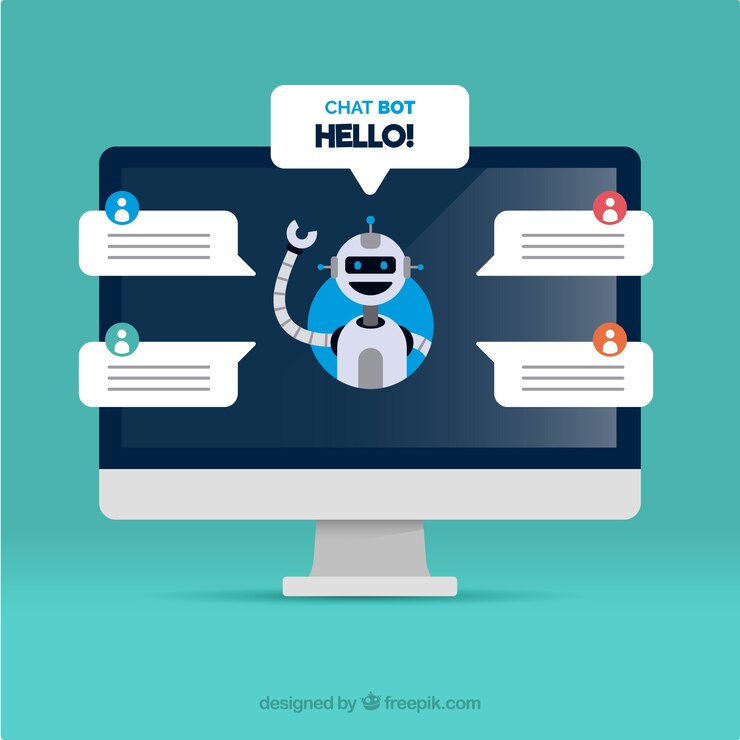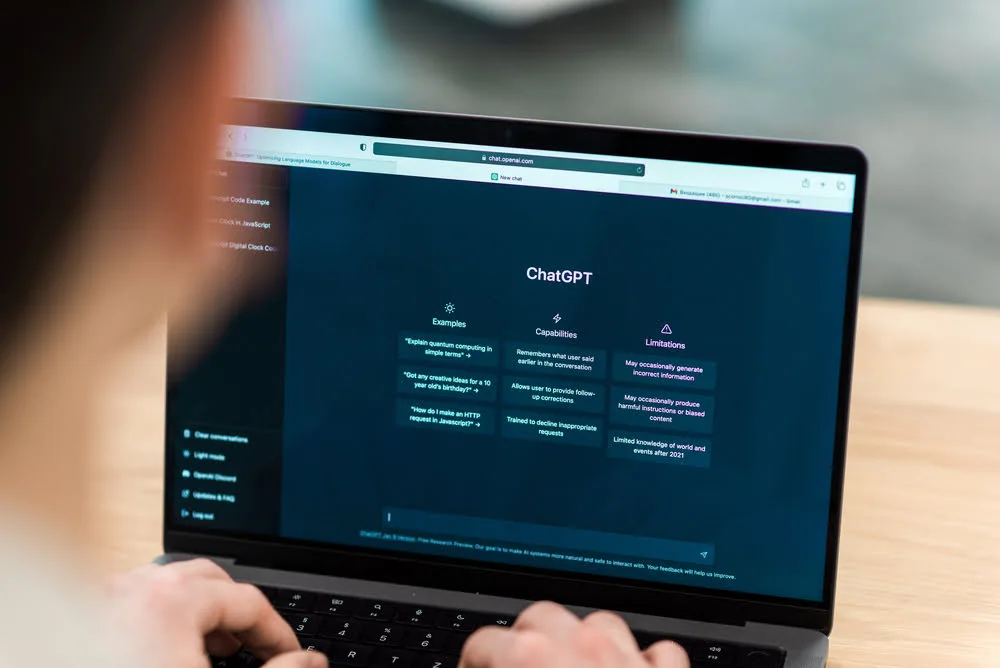What Are Chatbots?
In the midst of the conversational revolution, chatbots have emerged as digital assistants that simulate human conversation through text or voice interactions. These AI-powered tools have transformed how businesses interact with customers, handling everything from customer service to sales inquiries. Let’s explore the five main types of chatbots for customer service that dominating the landscape in 2024.
Table of Contents
Rule-Based Chatbots for Customer Service
Rule-based chatbots operate on a pre-programmed set of rules and decision trees. Think of them as digital flowcharts that follow specific “if/then” scenarios. These chatbots excel at handling straightforward queries but struggle with complex conversations that deviate from their programming. Many basic customer service chatbots fall into this category, offering quick responses to common questions.
Keyword-Based Chatbots
These chatbots analyze user input for specific keywords and respond based on matching patterns. They’re more flexible than rule-based systems but can still miss context. For example, an e-commerce chatbot might detect a “return policy” in a customer’s message and automatically provide return information, regardless of the broader conversation context.
Machine Learning Chatbots
Machine learning chatbots represent a significant leap forward, using AI to learn from each interaction. These sophisticated systems analyze patterns in conversations, customer behaviors, and outcomes to improve their responses over time. They can handle more nuanced queries and adapt their communication style based on user preferences.
Natural Language Processing (NLP) Chatbots
NLP chatbots understand and process human language in a more natural way. They can interpret context, sentiment, and even subtle nuances in communication. These advanced systems power virtual assistants like Siri and Alexa, offering more human-like interactions and understanding variations in language patterns and colloquialisms.
Hybrid Chatbots
Hybrid chatbots combine multiple technologies to create more versatile solutions. They might use rule-based systems for specific tasks while employing NLP and machine learning for more complex interactions. This approach offers the best of both worlds: the reliability of structured responses and the adaptability of AI-powered learning.
Each type of chatbot serves different purposes and comes with its own set of advantages. Understanding these distinctions is crucial for businesses looking to implement the right chatbot solution for their specific needs.
- Rule-based: Best for structured, predictable interactions
- Keyword-based: Ideal for simple customer service queries
- Machine Learning: Perfect for evolving customer needs
- NLP: Excellent for complex, natural conversations
- Hybrid: Optimal for versatile business requirements

Understanding Chatbot Fundamentals
As we delve into the conversational revolution of 2024, understanding chatbot fundamentals becomes crucial for businesses and developers alike. Today’s chatbots range from simple automated responders to sophisticated AI-powered assistants, each serving unique purposes in our digital ecosystem.
Rule-Based Chatbots for Customer Service
Rule-based chatbots operate on a predefined set of rules and decision trees, making them the simplest form of conversational AI. These chatbots follow an if/then logic structure, providing specific responses to exact matches in user input. While limited in flexibility, they excel in scenarios requiring consistent, straightforward responses, such as FAQ handling or basic customer service.
Keyword-Based Chatbots
Taking a step up from rule-based systems, keyword-based chatbots scan user input for specific words or phrases to determine appropriate responses. These chatbots utilize customizable libraries of keywords and their associated responses, making them more versatile than their rule-based counterparts. They’re particularly effective in content recommendation and basic customer inquiry handling.
Machine Learning Chatbots
Machine learning chatbots represent a significant leap forward in conversational AI. These sophisticated systems learn from each interaction, continuously improving their response accuracy and contextual understanding. Using vast datasets and pattern recognition, they can handle complex queries and adapt to new scenarios, making them invaluable for advanced customer service applications.
Natural Language Processing (NLP) Chatbots
NLP chatbots stand at the forefront of conversational AI technology, capable of understanding and processing human language in its natural form. These advanced systems can interpret context, sentiment, and intent behind user messages, enabling more human-like interactions. Major platforms like GPT-powered assistants showcase the remarkable capabilities of NLP chatbots.
Hybrid Chatbots
Combining the best of multiple approaches, hybrid chatbots integrate various technologies to create more robust conversational experiences. These versatile systems might use rule-based logic for specific tasks while employing NLP for open-ended conversations, offering the perfect balance between reliability and sophistication. They represent the future of chatbot technology, providing scalable solutions for complex business needs.
- Key benefits of modern chatbots:
- 24/7 availability
- Scalable customer support
- Consistent service delivery
- Cost-effective operations

What Are the Different Types of Chatbots?
As we dive into the conversational revolution of 2024, understanding the various types of chatbots becomes crucial for businesses and developers alike. From simple rule-based systems to sophisticated AI-powered assistants, each type serves specific purposes and offers unique capabilities. Let’s explore the five main categories of chatbots shaping today’s digital interactions.
Rule-Based Chatbots for Customer Service
Rule-based chatbots operate on a predefined set of rules and decision trees. These chatbots follow a strict “if/then” logic pattern, making them ideal for simple, straightforward interactions. While limited in flexibility, they’re highly reliable for specific tasks like FAQ responses or basic customer service queries. Many businesses start their chatbot journey with this type due to its predictability and ease of implementation.
Keyword-Based Chatbots
Keyword-based chatbots analyze user input for specific words or phrases to determine appropriate responses. These bots are more flexible than rule-based systems, as they can identify multiple variations of questions or commands. They’re particularly effective in customer service scenarios where users might phrase similar questions differently. However, they may struggle with complex queries or contextual understanding.
Machine Learning Chatbots
Machine learning chatbots represent a significant leap forward in chatbot technology. These AI-powered assistants continuously learn from interactions, improving their responses over time. They can recognize patterns, adapt to new situations, and provide more personalized experiences. Notable examples include customer service bots that become more efficient at resolving issues as they process more interactions.
Natural Language Processing (NLP) Chatbots
NLP chatbots understand and process human language in a more sophisticated way. They can interpret context, sentiment, and intent behind user messages, making conversations feel more natural and human-like. These bots excel in complex scenarios requiring nuanced understanding, such as healthcare consultations or technical support. Companies like OpenAI and Google have made significant strides in NLP technology.
Hybrid Chatbots
Hybrid chatbots combine multiple approaches to leverage the strengths of different chatbot types. They might use rule-based systems for critical functions while employing ML and NLP for more complex interactions. This versatility makes them ideal for enterprises requiring both structured responses and adaptive learning capabilities. Many modern customer service platforms utilize hybrid systems to provide comprehensive support.
- Rule-based: Best for simple, structured tasks
- Keyword-based: Ideal for basic customer service
- Machine Learning: Perfect for adaptive responses
- NLP: Excellent for complex conversations
- Hybrid: Optimal for comprehensive solutions
What Are the Benefits of Using Chatbots?
As we dive into the conversational revolution of 2024, chatbots have become indispensable tools for businesses and organizations. Let’s explore how different types of chatbots can benefit your operations and enhance customer experience.
Rule-Based Chatbots for Customer Service
Rule-based chatbots offer straightforward benefits through their predictable and reliable nature. These chatbots excel at handling routine inquiries and providing consistent responses, making them perfect for:
- 24/7 customer support for common questions
- Streamlined appointment scheduling
- Basic troubleshooting guidance
- Cost-effective customer service solutions
Keyword-Based Chatbots
Keyword-based chatbots bring enhanced flexibility to customer interactions. These systems can recognize specific terms and phrases, delivering more targeted responses. Their benefits include:
- Improved response accuracy
- Reduced customer wait times
- Efficient routing of complex queries
- Scalable customer support
Machine Learning Chatbots
Machine learning chatbots represent a significant leap forward in AI-powered communication. These sophisticated systems continuously improve through interactions, offering:
- Personalized customer experiences
- Adaptive learning capabilities
- Enhanced problem-solving abilities
- Improved conversation quality over time
Natural Language Processing (NLP) Chatbots
NLP chatbots excel at understanding and responding to human language naturally. Their advanced capabilities provide:
- More natural, human-like conversations
- Better understanding of context and intent
- Handling of complex queries
- Multilingual support capabilities
Hybrid Chatbots
Hybrid chatbots combine the best features of multiple chatbot types, offering the most comprehensive solution. These versatile systems provide:
- Maximum flexibility and adaptability
- Seamless escalation to human agents
- Enhanced accuracy and reliability
- Optimal balance of automation and personalization
By understanding these different chatbot types and their benefits, businesses can make informed decisions about which solution best suits their needs in the evolving landscape of conversational AI.

Which Chatbot is Best for WordPress?
In 2024, choosing the right chatbot for your WordPress site can significantly impact user engagement and support efficiency. Let’s explore the five main types of chatbots available for WordPress, each offering unique capabilities to enhance your website’s conversational capabilities.
Rule-Based Chatbots for Customer Service
Rule-based chatbots, like WP-Chatbot and 3dcart Live Chat, follow predetermined paths based on specific triggers. These chatbots are perfect for WordPress beginners due to their straightforward setup and reliable performance. They excel at handling common customer queries and basic support tasks, making them ideal for small to medium-sized websites.
Keyword-Based Chatbots
Platforms such as MobileMonkey and ManyChat offer keyword-based chatbots that scan user input for specific terms and respond accordingly. These solutions integrate seamlessly with WordPress and provide excellent functionality for e-commerce sites and content-heavy blogs. Their ability to understand context makes them particularly effective for content recommendation and product searches.
Machine Learning Chatbots
Advanced solutions like Dialogflow and IBM Watson integrate with WordPress through plugins, offering sophisticated learning capabilities. These chatbots continuously improve their responses based on user interactions. While more expensive, they provide superior customization and can handle complex conversations, making them ideal for enterprise-level WordPress sites.
Natural Language Processing (NLP) Chatbots
WordPress-compatible NLP chatbots, such as Botpress and Rasa, offer the most human-like interactions. These sophisticated tools can understand context, sentiment, and nuanced language. They’re particularly effective for businesses requiring detailed customer interactions, though they typically require more technical expertise to implement.
Hybrid Chatbots
Hybrid solutions like ChatBot.com and Drift combine multiple chatbot technologies, offering the best of all worlds for WordPress sites. These versatile tools can switch between automated and human support seamlessly, making them perfect for growing businesses that need scalable solutions. They typically offer robust WordPress plugins and extensive customization options.
- Consider your technical expertise level
- Evaluate your budget constraints
- Assess your website’s specific needs
- Check for WordPress compatibility and integration options
- Review customer support and documentation availability
Which is the Best AI Chatbot?
As we navigate through the conversational revolution in 2024, determining the best AI chatbot depends largely on your specific needs and use case. Let’s explore the five main types of chatbots and their unique strengths to help you make an informed decision.
Rule-Based Chatbots for Customer Service
Rule-based chatbots follow predetermined paths and work best for simple, straightforward interactions. These chatbots excel in scenarios where responses can be standardized, such as FAQ sections or basic customer service. While limited in flexibility, they’re highly reliable and cost-effective for businesses just starting with automation.
Keyword-Based Chatbots
These chatbots identify specific keywords in user input to generate appropriate responses. They’re more flexible than rule-based systems and can handle a broader range of queries. Popular in e-commerce, they can effectively process customer inquiries about products, pricing, and availability by recognizing key terms and phrases.
Machine Learning Chatbots
Machine learning chatbots represent a significant leap forward in AI technology. They learn from each interaction, continuously improving their responses over time. Companies like OpenAI’s ChatGPT showcase how these bots can handle complex conversations, generate creative content, and provide more nuanced assistance than their simpler counterparts.
Natural Language Processing (NLP) Chatbots
NLP chatbots understand and process human language in a more sophisticated way. They can interpret context, sentiment, and intent behind user messages. These advanced systems, like Google’s LaMDA, excel in maintaining more natural, human-like conversations and can handle complex queries with remarkable accuracy.
Hybrid Chatbots
Combining the best features of multiple chatbot types, hybrid chatbots offer the most versatile solution for modern businesses. They merge the reliability of rule-based systems with the adaptability of ML and NLP capabilities. This makes them ideal for organizations requiring both structured responses and advanced conversational abilities.
- Best for Simple Tasks: Rule-Based Chatbots
- Best for E-commerce: Keyword-Based Chatbots
- Best for Learning & Adaptation: Machine Learning Chatbots
- Best for Natural Conversation: NLP Chatbots
- Best Overall Solution: Hybrid Chatbots
Ultimately, the “best” chatbot depends on your specific requirements, budget, and technical capabilities. For most enterprise applications in 2024, hybrid chatbots offer the most comprehensive solution by combining multiple technologies for optimal performance.
How to Integrate an AI Chatbot in WordPress
As we dive into the conversational revolution of 2024, integrating AI chatbots into WordPress websites has become easier than ever. Let’s explore the different types of chatbots you can implement and their specific integration methods.
Rule-Based Chatbots for Customer Service
Rule-based chatbots are the simplest to integrate into WordPress through plugins like WP-Chatbot or Chatbot for WordPress. These chatbots follow predefined rules and can be configured using a straightforward interface. Ideal for businesses starting their chatbot journey, they require minimal technical expertise and offer:
- Easy setup through WordPress plugin directory
- Basic customer service automation
- Customizable conversation flows
Keyword-Based Chatbots
Keyword-based chatbots offer more flexibility and can be integrated using popular plugins like MobileMonkey or ManyChat. These solutions scan user input for specific keywords and respond accordingly. Implementation typically involves:
- Keyword library setup
- Response mapping
- Integration with existing WordPress forms
Machine Learning Chatbots
Advanced ML chatbots can be integrated through platforms like Dialogflow or IBM Watson. These require API integration but offer superior conversational capabilities. The process includes:
- API key configuration
- WordPress REST API setup
- Training data implementation
Natural Language Processing (NLP) Chatbots

NLP chatbots provide the most sophisticated conversation capabilities and can be integrated using services like OpenAI’s GPT or Microsoft’s Azure Bot Service. Implementation requires:
- Advanced API integration
- Language model selection
- Custom code implementation
Hybrid Chatbots
Hybrid chatbots combine multiple technologies and can be integrated using comprehensive solutions like Botpress or Rasa. These offer the best of all worlds and typically require:
- Multiple API configurations
- Custom workflow setup
- Integration with existing WordPress features
Regardless of the chatbot type you choose, ensure proper testing and monitoring after integration to maintain optimal performance and user experience. Regular updates and maintenance will keep your chatbot functioning effectively as technology continues to evolve.
What is the smartest AI chat?
The most advanced AI chat currently available is widely considered to be GPT-4, which powers both ChatGPT Plus and specialized versions of other AI chatbots. It demonstrates superior capabilities in understanding context, generating accurate responses, and handling complex tasks across multiple domains.
However, the "smartest" AI chat can vary depending on your specific needs:
• ChatGPT Plus (GPT-4): Best for general knowledge and complex reasoning
• Claude: Excels at detailed analysis and academic writing
• Bard: Strong at real-time information and Google integration
• Bing Chat: Effective for current events and web-based research
Pro tip: For the best results, use a combination of AI chatbots rather than relying on just one. Each has unique strengths and limitations.
The landscape of AI chatbots is rapidly evolving, but GPT-4-based solutions currently offer the most advanced and reliable performance for most users.
Is AI chatbot free?
Are AI Chatbots Free?
While some AI chatbots offer free tiers or basic versions, the full functionality often comes with a cost. Popular platforms like ChatGPT provide free access to their basic model, but premium features require a subscription. For example, ChatGPT Plus costs $20/month for enhanced capabilities and faster response times.
Many business-focused chatbot platforms operate on a freemium model, meaning:
• Basic features are free
• Advanced functions require payment
• Enterprise solutions come with custom pricing
Practical tip: If you're just starting with AI chatbots, begin with free versions like ChatGPT's basic model or Google's Bard to evaluate their usefulness before investing in paid options.
In conclusion, while free AI chatbots exist, the most powerful and reliable solutions typically require some investment. The key is matching your needs with the right pricing tier, starting with free options and scaling up as necessary.
what are AI plugins for WordPress?
AI plugins for WordPress are software add-ons that integrate artificial intelligence capabilities into WordPress websites. These tools leverage machine learning and natural language processing to automate various tasks and enhance website functionality.
Common features of AI WordPress plugins include:
• Automated content generation
• Smart image optimization
• Chatbot integration
• SEO recommendations
• Personalized user experiences
• Content analysis and improvement suggestions
One particularly useful tip: When choosing an AI plugin, prioritize those that offer a free trial period and have regular updates. This allows you to test the functionality before committing and ensures ongoing compatibility with WordPress updates.
Popular examples include Rank Math AI, AiContentfy, and ChatGPT for WordPress. These plugins can significantly streamline workflow and improve user engagement, though it's important to remember that AI-generated content should always be reviewed and refined by human editors for best results.
How can I choose the right type of chatbot for my needs?
Choosing the Right Chatbot for Your Needs
To select the ideal chatbot, start by clearly defining your primary objectives. Rule-based chatbots work best for simple, predictable interactions like FAQ responses or basic customer service, while AI-powered chatbots are better suited for complex conversations and learning from user interactions.
Consider these key factors:
• Your budget (AI chatbots typically cost more)
• Required level of conversation complexity
• Integration needs with existing systems
• Expected user volume
• Language requirements
For optimal results, match the chatbot type to your specific use case. If you need basic customer support during off-hours, a rule-based chatbot might suffice. However, if you're looking to provide personalized product recommendations or handle varied customer queries, an AI-powered solution would be more appropriate.
Pro tip: Start with a small pilot program to test your chosen chatbot's effectiveness before full implementation. This allows you to adjust and optimize based on real user interactions.
What are some limitations of chatbots?
Chatbots, while increasingly sophisticated, face several notable limitations that businesses and users should consider:
### Technical Constraints
- Limited understanding of context and nuance
- Difficulty processing complex or ambiguous queries
- Inability to handle unexpected situations or questions outside their training
### Communication Barriers
- Lack of emotional intelligence and empathy
- Potential for misinterpreting user intent
- Repetitive or generic responses that may frustrate users
### Practical Limitations
- Dependency on pre-programmed responses
- Need for regular updates and maintenance
- Security and privacy concerns with sensitive information
Pro Tip: When implementing chatbots, always provide a clear escalation path to human support for complex issues or when the bot can't adequately address user needs.
In conclusion, while chatbots are valuable tools for basic customer service and information delivery, they work best when used as a complement to human support rather than a complete replacement.
